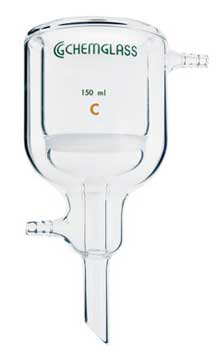| The Home page of ILPI's Safety Data Sheet (SDS) Resource, the leader in SDS information since 1995! | |
| The history and philosophy behind this resource. | |
| A curated collection of books and reference materials concerning Safety Data Sheets and closely related topics. | |
| Paste your plain text SDS into the SDS-Demystifier, and it will be converted into a hypertext-enriched document with links to detailed explanations of each key term. | |
| An extensive list of frequently asked questions about Safety Data Sheets including regulations, content, compliance, and more. | |
| A humorous take on Safety Data Sheet jargon. Fill in the blanks on our entry form to generate a personalized Unsafety Data Sheet to share with your coworkers. | |
| Since 1995, we've maintained this massive curated list of the best places to find Safety Data Sheets on the Internet. | |
| You are here! Way more than a glossary, this hypertext-enhanced resource covers hundreds of SDS-related terms and expert knowledge. Each entry includes both the SDS relevance and links to additional authoritative resources. | |
| Archived results of Safety Data Sheet related polls taken by some of our millions of site visitors | |
| The OSHA regulations behind SDS regulations, including the inspection guidelines and over 400 official interpretations letters under the Hazard Communication Standard | |
| Commercial suppliers of SDS authoring and management software as well as cloud compliance services. | |
| Commercial companies that will create SDS's for your specific needs as well as SDS translation companies. |

Safety signs, banners, and scoreboards? Get yours at Safety Emporium!

Your chemical reactions can be run safely and effectively with US-made clamps and other laboratory accessories from Safety Emporium.
Definition
A fetotoxin is a substance or agent that can poison or cause degenerative effects in a developing fetus or embryo. The effects are generally similar to those an adult would suffer from exposure.
This is closely related to a teratogen, which causes malformations of an embryo or fetus.
Both fetotoxins and teratogens are reproductive toxins, substances which cause damage to one's reproductive and/or endocrine system and/or a developing fetus.
Additional Info
A fetotoxin can cause developmental toxicity. The American College of Occupational and Environmental Medicine defines developmental toxicity as:
The occurrence of adverse effects on the developing organism that may result from exposure before conception [pregnancy] (either parent), during prenatal [before birth] development, or postnatally [after birth] to the time of sexual maturation [puberty] . Adverse developmental effects may be detected at any point in the life span of the organism."
Examples of developmental toxicity include fetal death, structural abnormalities or birth defects, and functional deficiencies or altered growth.
In response to potential reproductive hazards and fetotoxins, the state of California (USA) passed a measure called the The Safe Drinking Water and Toxic Enforcement Act of 1986, which is better known by its ballot name, Proposition 65. This act attempts to regulate the use of carcinogens as well as fetotoxins and reproductive hazards. Products containing any of the 800 listed chemicals must carry a warning unless the exposure is low enough to pose no significant risk of cancer or is significantly below levels observed to cause birth defects or other reproductive harm. Further information can be found under Further Reading below.
The landmark 1991 Supreme Court case, United Automobile Workers v. Johnson Controls, Inc involved an employer who barred women from knowingly working with fetotoxic lead metal. The court ruled this policy, despite its good intention of preventing fetal harm, violated Title VII of the Civil Rights Act of 1964 as amended by the Pregnancy Discrimination Act of 1978. The obvious implication is that employers should improve the safety of their workplaces instead.
SDS Relevance
Always minimize the use and release of fetotoxins (or believed fetotoxins) in the workplace. If you are of child-bearing age, and must work with such materials, make sure that your employer implements workplace controls that minimize or eliminate your exposure. Better yet, see if you can avoid working with such materials. You will find some very useful links about reproductive health issues in the workplace in Further Reading (below).
Safety Data Sheets are not required to carry Proposition 65 warnings. However, the products on that list must carry a warning statement that they contain substance(s) "known to the state of California to cause cancer" or"cause birth defects or other reproductive harm". For specific warnings see https://www.p65warnings.ca.gov/sample-warnings-and-translations-businesses.

Filter mixtures at constant temperature with laboratory frits and filters from Safety Emporium.
Further Reading
- NIOSH has a great site on Reproductive Health And The Workplace.
- Workplace Chemical Hazards to Reproductive Health by the California Dept of Health Services Dept of Industrial Relations.
- The University of California at Davis has a page on Pregnancy and Reproductive Hazards in the Workplace: Physical and Biological Hazards (click on the download from Box link). Be sure to try the SafetyNets link as well.
- The California Office of Environmental Health Hazard Assessment's Prop 65 page explained.
- The California Office of Environmental Health Hazard Assessment (OEHHA) maintains the Current Proposition 65 List.
- Proposition 65 FAQ at the State of California Department of Justice.
- Preconception Brief: Occupational/Environmental Exposures from Matern Child Health J. 2006 September; 10(Suppl 1): 123-128.
- Reproductive/Developmental toxicity, a PowerPoint presentation with some case studies and some technical aspects. Available thanks to the Internet Archive.
- The American Chemical Society's Committee on Chemical Safety has a short guidance document titled Developing Reproductive Protection Programs in Industrial and Academic Setting.
- Keeping safe during pregnancy, a background article on the following link:
- What to Expect When Expecting in Lab: A Review of Unique Risks and Resources for Pregnant Researchers in the Chemical Laboratory from Chem. Res. Toxicol., 2022, 35(2), pp 163-198 ().
- Summary of United Automobile Workers v. Johnson Controls, 499 U.S. 187 (1991) at Justia.com
See also: mutagen, carcinogen, reproductive toxin.